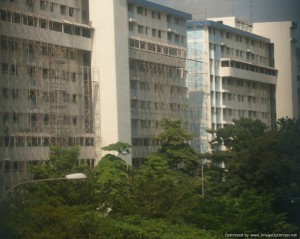Singapore’s En Bloc Property Market
By PEARL LIM
Since its heyday in 2005 to 2007, transactions in Singapore’s en bloc property market have not been able to return to previous levels. At its height in 2007, more than $12 billion worth of sales was concludedwith roughly 6,652 units being sold. The ensuing economic crisis in 2008 to 2009, unsurprisingly, witnessed a slide in transactions to under $1 billion.From then on, in 2010 and 2011, with the economy picking up collective sales likewise improved to about $2 billion.
Despite the rebound, figures available for this year suggest collective sales may take yet another beating. Year-over-year figures reflect a dip in transactions.
“Between January and June this year, the total transaction value of residential en-bloc properties fell to about S$250 million, from almost S$1.6 billion in the same period last year” (Wee Leng).
Experts cited different reasons for the anemic activity. Among which include the cooling measures introduced by the Singapore’s Government. In December 2011, an additional buyer’s stamp duty (ABSD) was implemented. For developers, this means they have to pay a 10% ABSD if all units in the redeveloped site are not sold within three or five years after the land was acquired. (Developers are liable to pay ABSD for land purchases for residential development, but they are given a remission period of three or five years, depending on the number of residential units to be developed on the site. During the stipulated time-frame, they will have to sell all units, or be subjected to ABSD with interest). Below is an illustration on what this means for developers.
Impact on developer’s profit (Simplified): –
Cost
- Land = $70 million
- Construction Cost = $30 million
Revenue (Selling Price)
- Price = $130 million
Gross Profit Margin
- Revenue – Cost = $130 million – $100 million = $30 million
- or $30 million / $100 million = 30%
But noting that developers normally borrow for land purchase and construction, they may only come up with $30 to $40 million of the $100 million required for the development.
Hence their equity is only
- Equity = $30 million
With an investment of $30 million (borrow $70 million), the return on equity is:
- Return on Equity (ROE) = Gross Profit / Equity
- ROE = $30 million / $30 million (Gross Mark-up) = 100%
With an additional ABSD of 10% being imposed on developers for exceeding 5 years in the sale of all units, the developer\’s returns will become (For simplicity, we did not include the interest on ABSD):
New Gross Profit Margin
- $30 million (Gross Margin) – $10 million (10% ABSD) = $20 million
- $20 million / $100 million = 20%
New Return on Equity will be:
- $20 million / $30 million = 66.67% (This is a huge drop of returns compared to the 100% previously)
Hence developers will bid for sites only if they think they can complete the development and sell all units within three or five years to avoid the ABSD, or if they can price in this ABSD and pass on the cost to the consumers.
But given the extra time needed to demolish existing buildings on the acquired land, this causes developers to balk at en-bloc purchases. The ailing economy and the latest round of cooling measures implemented in October could serve as other deterring factors. Increasing Government Land Sales prices, escalating development charge rates and construction costs are the remaining factors.
Yet, en-bloc sales volume for the third quarter of 2012 showed signs of picking up – numbers surpass that for the first half of the year.
“On the collective sales front, nine transactions worth about $1 billion were concluded in 3Q2012. This value is higher than the total 15 deals worth $960 million concluded in 1H2012” (Tan).
Third-quarter residential transactions include: Chateau Eliza at Mount Elizabeth sold for S$92.2 million; Green Lodge at Toh Tuck Road sold for $191.9 million and Thomson View Condominium sold for $590 million. The exorbitant selling price of the latter is believed to have been propped by the upcoming Thomson MRT Line.However, these sales were concluded before the latest round of anti-speculative measures kicked in on October. Coupled with the grim economic outlook, one wonders if the momentum of the en-bloc activity will taper off. However the development of MRT lines could have an offsetting effect. Experts foresee more en-bloc sales of properties near upcoming MRT lines.
For advice on a new home loan.
For refinancing advice.
Download this article here.
References
1. Amy Tan, “Property Briefs: Home”, The Edge Singapore 8 Oct 2012, Print
2. Wee Leng, “Residential En-bloc Market on the Decline”, Channel NewsAsia 29 Jul 2012, Web
<http://www.channelnewsasia.com/stories/singaporelocalnews/view/1216442/1/.html>
3. Inland Revenue Authority of Singapore, “Remission (for ABSD)”, Web
<http://www.iras.gov.sg/irasHome/page.aspx?id=12822>





